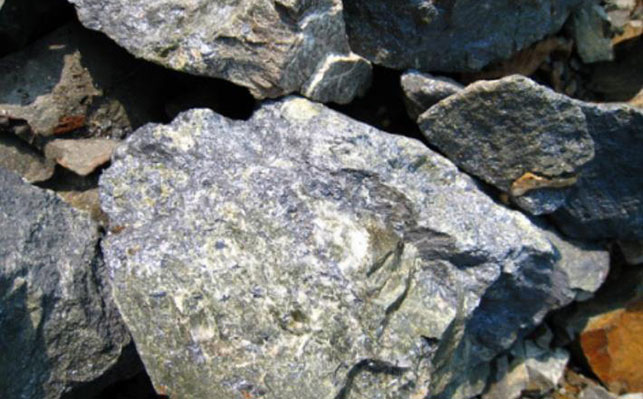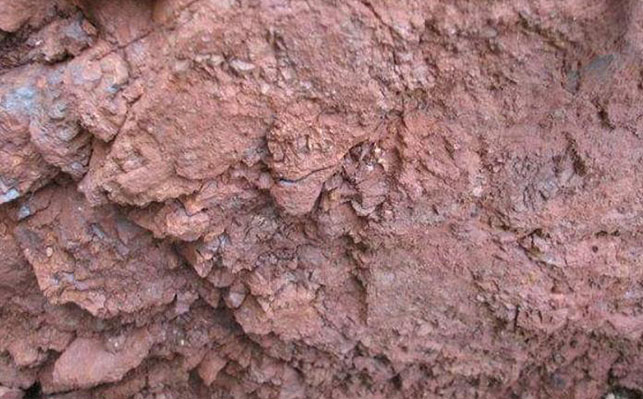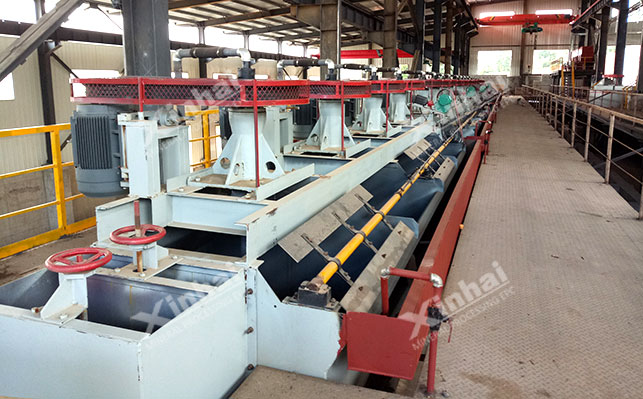
15311826613
Click to add WeChatAs the main source of nickel metal extraction, nickel ore plays a key role in the modern industrial system. According to the difference in ore properties, nickel sulfide and laterite nickel are the two main types of nickel minerals, and they have many differences in many aspects. Let's introduce them from several dimensions.

Nickel sulfide ore:Nickel sulfide ore refers to a deposit where nickel elements mainly exist in the form of sulfide minerals. The core minerals include pentlandite ((Fe,Ni)₉S₈), pyrite (NiS), etc. Its formation mainly depends on magma melting and hydrothermal mineralization process: in a high temperature and high pressure magma environment, sulfide and silicate melt are separated, and sulfide melt rich in nickel, copper and cobalt cools and crystallizes under specific geological conditions to form nickel sulfide deposits with industrial value. This type of deposit is usually associated with copper, cobalt, platinum group metals, etc., forming a complex polymetallic symbiotic system, typical examples of which are world-class deposits such as Sudbury in Canada and Norilsk in Russia.
Laterite nickel ore:Laterite nickel ore is a secondary deposit formed by ultrabasic rocks (such as peridotite and serpentinite) under tropical and subtropical climate conditions after millions of years of weathering and leaching. During the weathering process, the ferromagnesian silicate minerals in the parent rock decompose under the action of water, oxygen and microorganisms, and the nickel element is enriched in the weathering crust in the form of oxides (such as nickel-containing limonite (Fe,Ni) O (OH)·nH₂O) or silicates (such as magnesian nickel ore (Ni,Mg)₃Si₂O₅(OH)₄). Its formation requires specific climatic and geological conditions. It is mainly distributed in Indonesia, the Philippines, New Caledonia and other equatorial areas around the world, with typical layered distribution characteristics.
Nickel sulfide ore: Nickel sulfide is mainly composed of pentlandite and pyrrhotite, often accompanied by sulfides such as chalcopyrite (CuFeS₂) and pyrrhotite (Fe₁₋ₓS). Its nickel grade is relatively high (1%-5%), and its sulfur content can reach 20%-40%. It is rich in copper, cobalt (0.1%-1%) and platinum group metals (ppm level), and has a very high comprehensive utilization value. The mineral structure of nickel sulfide is dense, and the nickel element exists in the form of sulfide lattice, which needs to be extracted through chemical decomposition.
Laterite nickel ore: The upper layer of laterite nickel ore is mainly nickel-containing limonite (low nickel and high iron), and the lower layer is mainly silicon-magnesium nickel ore (high nickel and low iron), often mixed with goethite, serpentine, etc. The nickel grade is usually 0.8%-2.5%, the iron content is 30%-60%, the content of impurity elements such as magnesium, silicon, and aluminum is high, and the cobalt content is about 0.01%-0.1%. The mineral structure of laterite nickel ore is loose and porous, and it is soil-like. The nickel element mostly exists in the form of adsorption or lattice substitution. It has high chemical activity but is difficult to separate impurities.

Sulfide nickel ore: The average nickel grade of sulfide nickel is 1.5%-3%, and some rich ores can reach more than 5%. The resource concentration is high but the reserve growth rate is slow. Most of them are concentrated in Canada, Russia, Australia, China and other countries. The Sudbury deposit in Canada accounts for more than 10% of the global nickel sulfide ore reserves and about 40% of the global nickel resources. However, after a hundred years of mining, high-quality shallow resources have gradually been exhausted, and the proportion of deep mining has increased year by year.
Laterite nickel ore: The average nickel grade of laterite nickel ore is 1.2%-1.8%, and the low-grade characteristics are obvious, but the deposit is large in scale and covers a wide range, which is suitable for large-scale mechanized mining. Most of them are distributed in Indonesia (accounting for 22% of the global reserves), the Philippines, New Caledonia, and Australia, which constitute the main production areas, and are concentrated within 30° on both sides of the equator. It accounts for about 60% of the total global nickel resources. In recent years, the proven reserves have continued to grow, becoming the main source of nickel resource increments
Sulfide nickel ore: mainly underground mining (accounting for more than 70%), using vertical shaft development, staged collapse and other technologies, deep mining faces the problem of ground pressure control. The process flow of nickel sulfide beneficiation often adopts the "crushing-grinding-flotation" process, and the nickel sulfide minerals are enriched by adding xanthate collectors, and the concentrate grade can reach 10%-20%. This method has mature beneficiation technology and high recovery rate (nickel recovery rate is 85%-95%), and the associated copper and cobalt can be enriched simultaneously.

Laterite nickel ore: Mining method: Mainly open-pit mining (accounting for more than 90%), using a large-scale mining mode of bulldozer-loader-truck, and the mining cost is low. It cannot be enriched through conventional physical ore dressing, and it is necessary to directly use pyrometallurgy (RKEF) or hydrometallurgy (HPAL) treatment, which has a high technical threshold. The pyrometallurgical method has high energy consumption (8-12GJ per ton of nickel), and the hydrometallurgical method has equipment corrosion and waste slag treatment problems. The comprehensive recovery rate is 10%-15% lower than that of sulfide ore.
Smelting of sulfide nickel ore: The process of "roasting-electric furnace smelting-converter blowing" is adopted to produce high-grade nickel matte and then electrolytic refining to produce electrolytic nickel. The energy consumption is relatively low (4-6GJ comprehensive energy consumption per ton of nickel), and by-products such as sulfuric acid, copper, and cobalt can cover part of the cost.
Smelting of laterite nickel ore: The pyrometallurgical route can be adopted to produce nickel iron using the rotary kiln-electric furnace method (RKEF), which is suitable for high-magnesium and low-cobalt ores, and the products are used in stainless steel production. The hydrometallurgical route can also be adopted to produce nickel sulfate using high-pressure acid leaching (HPAL), which is suitable for low-magnesium and high-cobalt ores, and the products are used for battery materials. However, the cost is very high, the pyrometallurgical CO₂ emission intensity reaches 10-15 tons/ton of nickel, and the hydrometallurgical method consumes a large amount of sulfuric acid (5-8 tons per ton of nickel), and the cost of waste slag treatment accounts for 20%-30% of the total cost.
The above are the differences between the two nickel minerals. In general, there are obvious differences between sulfide nickel ore and laterite nickel ore in terms of properties, mining, beneficiation and smelting. In the future, the nickel mining industry will develop in an efficient, green and sustainable direction under the influence of multiple factors such as demand growth, resource development trends, technological innovation and environmental protection policies.
Xinhai Minerals can provide nickel mining and nickel beneficiation services. If you have any needs, please feel free to consult!